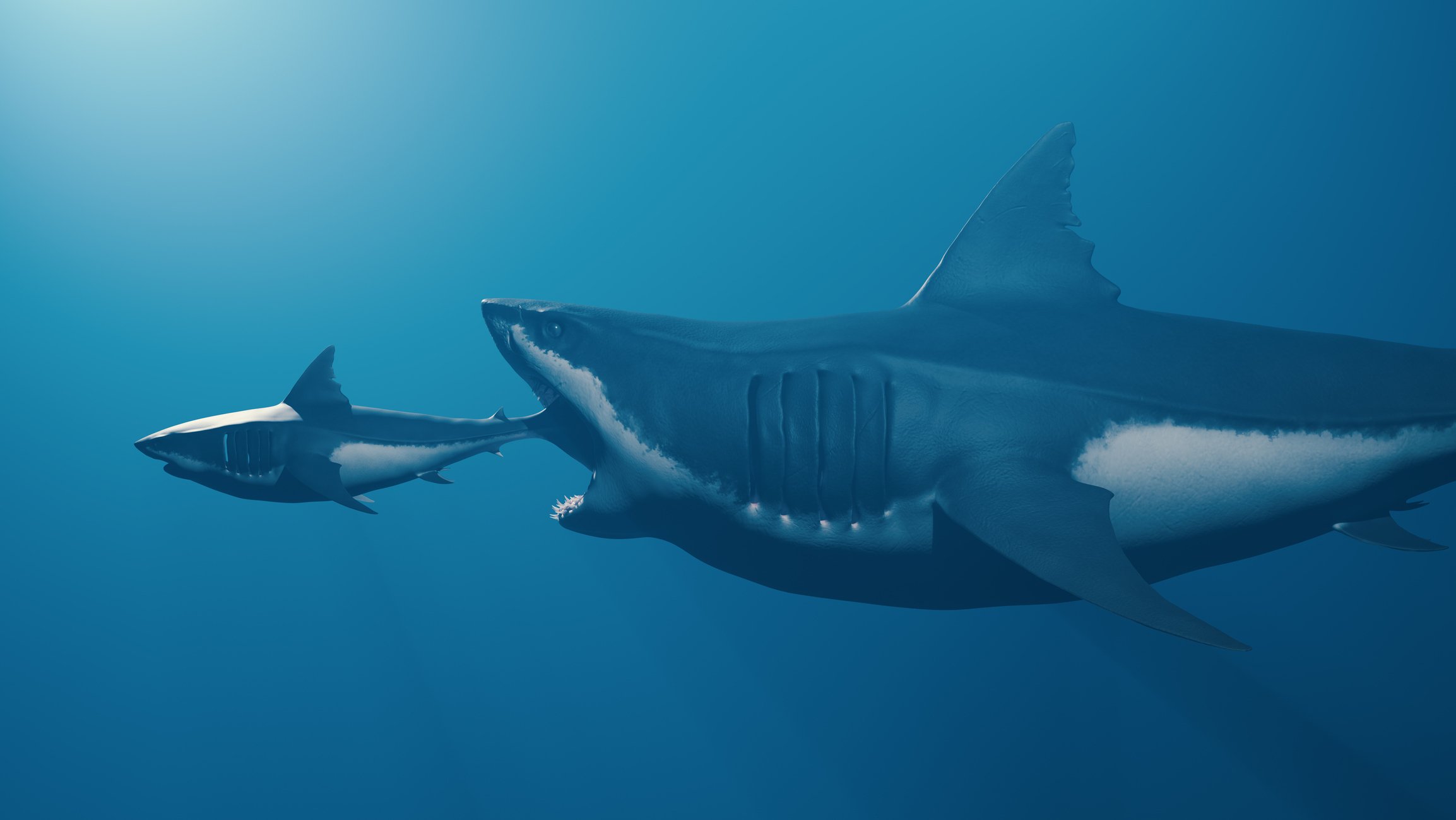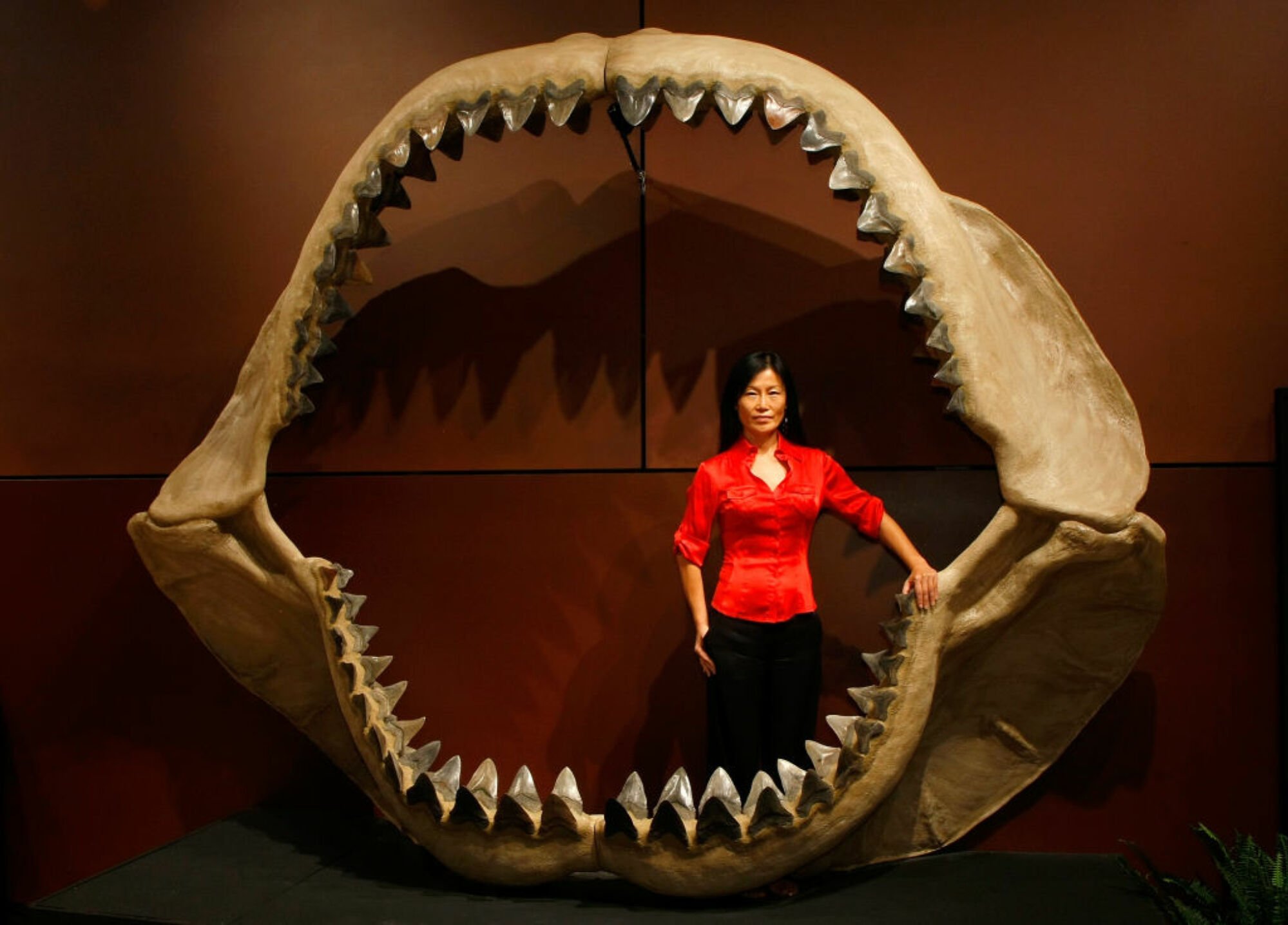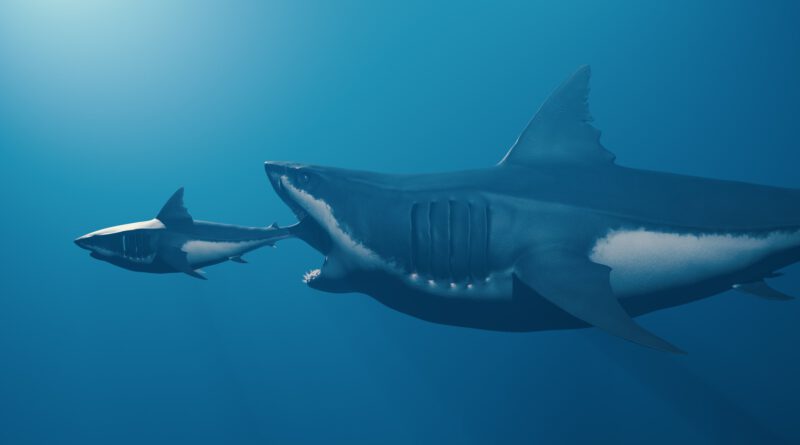Scientists find big megalodon tooth in a really unexpected place

There’s a megalodon tooth resting on my fireplace mantle.
The ancient, palm-sized fossil is fascinating, but a common household curio: Teeth from the giant extinct shark — which grew around 50 feet long, which is longer than a city bus — are frequently found in accessible coastal areas worldwide. The sharks’ huge jaws were lined with 276 teeth, and they likely lost and replaced thousands over their lifetimes, allowing plenty of teeth the chance to fossilize.
But scientists now report the first-ever discovery of a megalodon fossil in the extremely remote, completely dark deep sea, located over 10,000 feet (3,090 meters) beneath the surface. The finding, made by a remotely operated robot, reveals significant insights about the lives of these ocean giants, who lurked in the seas some 20 million to 3.6 million years ago. They were big enough to eat whales.
“This is an amazing find and is interesting in several aspects,” Nicolas Straube, a deep sea shark researcher at the University Museum Bergen in Norway and co-author of the study, said in a statement. The study was recently published in the science journal Historical Biology.
One of the main insights is that the predatory megalodon likely traversed the oceans, as opposed to just lurking along the coasts.
“The sample indicates that megalodon was not a purely coastal species and that this species migrated across ocean basins similar to many modern-day species such as the great white shark,” Jürgen Pollerspöck, a researcher at the Bavarian State Collection of Zoology in Germany and another co-author of the study, also said in a statement.
You can see the deep sea fossil below. And starting at 4:10 in the following video, you can watch footage of scientists using the remote operated vehicle Hercules to collect the rare specimen.

Another important revelation from the fossil, found in the Pacific Remote Islands Marine National Monument, located southwest of Hawaii, was its coating in a black mineral called ferromanganese. It takes a million years for just a few millimeters to accrue on deep ocean objects, providing evidence that this megalodon fossil, lodged in sediments and removed with a shovel, had been there for eons.
Shark biologists are still investigating why the megalodon, a species that once dominated the seas, went extinct. Cooling oceans could have been a contributor, and more recent research suggests the megalodon and great white sharks coexisted as apex predators near the end of the megalodon’s reign, some 5.3 to 3.6 million years ago. That means they were competitors for prey. Ultimately, the megalodons may have been put at a disadvantage because they likely took longer to grow so large and reach sexual maturity. More deep fossil finds may paint a clearer picture.
The deep sea is still largely unexplored, though scientists with several ocean exploration groups are making enormous research strides. This recent expedition, funded by the National Oceanic and Atmospheric Administration’s (NOAA) Ocean Exploration program, occurred aboard the Ocean Exploration Trust’s 224-foot-long vessel (E/V) Nautilus. It’s designed to deploy exploration robots into the deep sea, largely in the sprawling Pacific Ocean.

Indeed, deep sea exploration missions often return to the surface with discoveries, or rarely seen sightings.
“We always discover stuff when we go out into the deep sea. You’re always finding things that you haven’t seen before,” Derek Sowers, an expedition lead for NOAA’s Ocean Exploration mission, told Mashable in 2022.

